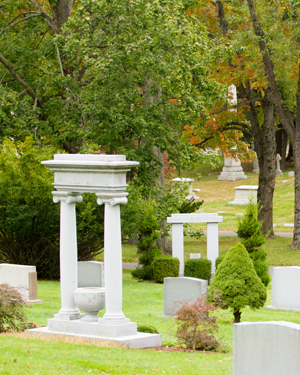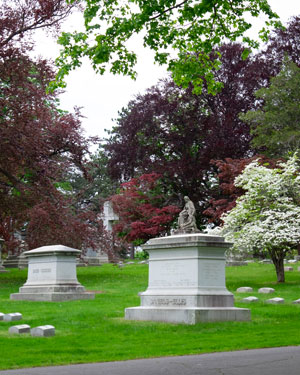Established in 1864, Cedar Hill Cemetery Encompasses 270 Acres of Landscaped Memorial Grounds.
Rural Cemetery
New Fashionable Cemetery
Jacob Weidenmann, Landscape Architect
Jacob Weidenmann, who designed Hartford’s Bushnell Park, served as Cedar Hill’s landscape architect and first superintendent. To learn more about Jacob Weidenmann, check out our video here.
Jacob Weidenmann, Landscape Architect
Jacob Weidenmann, who designed Hartford’s Bushnell Park, served as Cedar Hill’s landscape architect and first superintendent. To learn more about Jacob Weidenmann, check out our video here.
Cedar Hill History Highlights
Innovative Layout

Jacob Weidenmann laid out the burial grounds in the modern style of landscape architecture. No copings, fences, or hedges. Each lot was surrounded by open space reserved for planting or ornamentation. This innovative layout was the guiding principle for Weidenmann’s book, Modern Cemeteries (1888).
Lots for Sale

On July 16, 1866, Cedar Hill offered lots, varying in size from 20 to 100 feet square, to the public. The original cost was 25 cents per square foot, which increased to 30 cents in August 1866.
George Woodward, First Burial At Cedar Hill
George Woodward was the first burial at Cedar Hill Cemetery. He died in Mobile, Alabama on June 10, 1866 and was laid to rest July 17, 1866, a day after cemetery lots went on sale.
George Woodward, First Burial At Cedar Hill
George Woodward was the first burial at Cedar Hill Cemetery. He died in Mobile, Alabama on June 10, 1866 and was laid to rest July 17, 1866, a day after cemetery lots went on sale.
